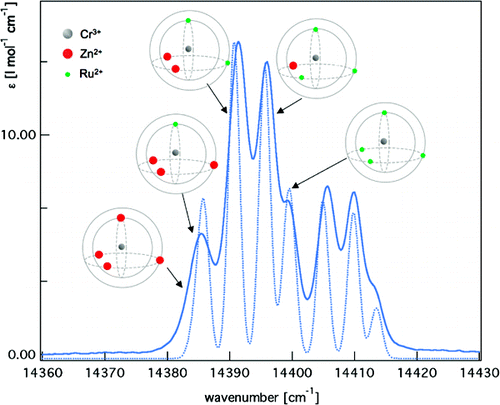-
Effect of External Pressure on the Excitation Energy Transfer from [Cr(ox)3]3- to [Cr(bpy)3]3+ in [Rh1-xCrx(bpy)3][NaM1-yCry(ox)3]ClO4
M. Milos, P. Pal and A. Hauser
ChemPhysChem, 11 (14) (2010), p3161-3166


DOI:10.1002/cphc.201000324 | unige:14715 | Abstract | Article HTML | Article PDF
Resonant excitation energy transfer from [Cr(ox)3]3- to [Cr(bpy)3]3+ in the doped 3D oxalate networks [Rh1-xCrx(bpy)3][NaMIII1-yCry(ox)3]ClO4 (ox=C2O4-, bpy=2,2’-bipyridine, M=Al,Rh) is due to two types of interaction, namely super exchange coupling and electric dipole–dipole interaction. The energy transfer probability for both mechanisms is proportional to the spectral overlap of the 2E→4A2 emission of the [Cr(ox)3]3- donor and the 4A2→2T1 absorption of the [Cr(bpy)3]3+ acceptor.The spin-flip transitions of (pseudo-)octahedral Cr3+ are known to shift to lower energy with increasing pressure. Because the shift rates of the two transitions in question differ, the spectral overlap between the donor emission and the acceptor absorption is a function of applied pressure. For [Rh1-xCrx(bpy)3][Na-M1-yCry(ox)3]ClO4 the spectral overlap is thus substantially reduced on increasing pressure from 0 to 2.5 GPa. As a result, the energy transfer probability decreases with increasing pressure as evidenced by a decrease in the relative emission intensity from the [Cr(bpy)3]3+ acceptor.

